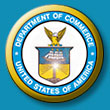|
|
Introduction
This interactive site allows scientists, fishermen, students and the general public to view maps and summary data for Industry Based Surveys (IBS) programs funded by the Cooperative Research Partners Program, NOAA's Fisheries Service.
CLICK HERE TO LAUNCH  THE INTERACTIVE MAP THE INTERACTIVE MAP
|
Available Survey Programs
|
 Atlantic Cod IBS Atlantic Cod IBS
The cod survey, performed by the Massachusetts Division of Marine Fisheries with support from NOAA's Northeast Fisheries Science Center, began in 2003. The survey has two primary goals: 1) to describe cod distribution and demographics in the Gulf of Maine (GOM); and 2) to assess the performance of rolling closure used as management measures in the region.
Working together, fisherman and scientist have combined their knowledge of the GOM cod stock, in order to develop a survey to accomplish these goals. The backbone of the survey is a standardized grid of sampling stations intended to evenly sample the regions shoal waters. Additionally, sampling stations in areas of historically important commercial activity, selected by industry representatives, were interspersed throughout grid. Due to the high level of work required to perform these surveys, biological sampling is limited to commercially important species. While all species captured are weighed, approximately twelve commercially important species are measured and counted consistently.
|
 Southern New England Yellowtail Flounder IBS Southern New England Yellowtail Flounder IBS
The SNE Yellowtail Flounder survey, which began in 2003, is operated jointly by the Rhode Island Division of Fish and Wildlife and NOAA's Northeast Fisheries Science Center. This survey also has two primary goals: 1) to describe the distribution and demographics of yellowtail flounder in the waters of Southern New England; and 2) to assess the performance of the Nantucket Lightship closed area, which was closed to fishing many years ago in order to protect yellowtail flounder.
In an effort to attain these goals, scientists and industry developed a two layer sampling design. The sampling stations in this survey are evenly distributed between randomly selected stations and industry selected stations. Biological sampling on this survey has been largely limited to yellowtail flounder, whereby all yellowtail are weighed and measured.
Other species are only presented in about half the cruises available at this time. The weights for "other species" in these cruises were generally estimated from very small sub-samples, and will only be useful in describing the general distribution of a given species.
|
General Data Display Note
For these and other trawl fishery surveys, the goal is to provide weights and counts by species for the entire catch. Given at-sea operating conditions, survey schedules and staffing, it is not always possible to weigh and count all species. Standard sub-sampling protocols allow estimation of the total catch in number if all species are sorted and weighed. The following symbols are used in the pie diagrams and line charts to indicate undetectable weights and species without counts.
<0.2 - Weight is less than 0.2 lbs.; positive catch below the detection level of the scale.
NC - Species Not Counted; weights only.
|
Minimum Internet Browser Requirements
Internet Explorer, Version 6 or higher. Go to http://windowsupdate.microsoft.com/ to update browser.
Mozilla Firefox, Version 1.0.7 or higher. Go to http://www.mozilla.com/to update browser.
Each browser must have PopUps enabled to view plots and graphs.
|
|
This site was developed by Northeast Fisheries Science Center
|
| This page was last updated on January 30, 2006. The interactive map was last updated on January 26, 2006. |
| Privacy Policy |




 Atlantic Cod IBS
Atlantic Cod IBS Southern New England Yellowtail Flounder IBS
Southern New England Yellowtail Flounder IBS